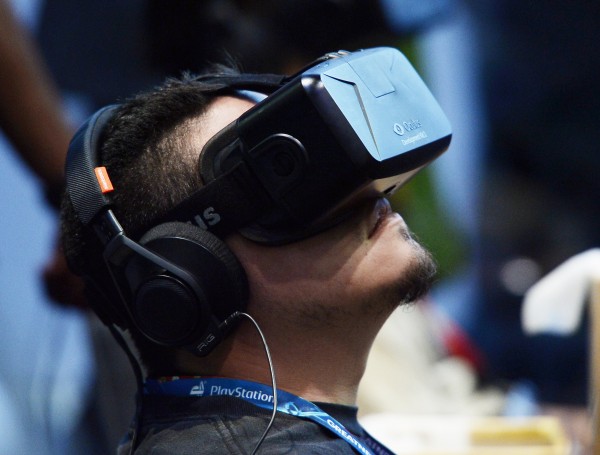Scientists Try to Make News More "Real"
| Dino Lirios | | Aug 31, 2014 01:04 AM EDT |
(Photo : Reuters)
Journalists and researchers are currently working on integrating virtual reality with news stories to totally immerse and affect viewers.
News has often been seen in a passive manner, with readers simply looking at the facts and not understanding the gravity of certain situations.
Like Us on Facebook
Nonny de la Pena, a senior researcher at the University of Southern California's Annenberg School of Journalism, looks to shift the paradigm by interweaving news with gaming technology.
De la Pena wants people that read the news to react emotionally to their stories.
As an example, she says her team record sounds like that of a live bombing in Syria and reconstructs the scenes in virtual reality.
Virtual reality goggles complete the process by tracking the participant's position in the room and translating his movements into the scene. This allows viewers to engage in the news events.
Thus, for a bombing in Syria, readers were first taken around a refugee site before witnessing the bomb exploding and seeing the explosion's effects first-hand.
De la Pena said the virtual reality space allowed for readers to react emotionally with the stories.
"It's really a kind of a whole-body experience and is very unique," she said.
On the forefront of virtual reality is Oculus Rift recently bought by Facebook.
While the Oculus Rift is primarily technology made for gaming, its use expands far beyond gaming and into architecture, education, anxiety and phobia treatment, post-traumatic stress disorder and even 3D designing.
Scottish company Eyedak, Ltd and Eyedak SL are also developing a product called vrAse that rivals the Oculus Rift.
Reports said vrAse can be used for watching films, TV and playing video games.
©2015 Chinatopix All rights reserved. Do not reproduce without permission
EDITOR'S PICKS
-

Did the Trump administration just announce plans for a trade war with ‘hostile’ China and Russia?
-

US Senate passes Taiwan travel bill slammed by China
-

As Yan Sihong’s family grieves, here are other Chinese students who went missing abroad. Some have never been found
-

Beijing blasts Western critics who ‘smear China’ with the term sharp power
-

China Envoy Seeks to Defuse Tensions With U.S. as a Trade War Brews
-

Singapore's Deputy PM Provides Bitcoin Vote of Confidence Amid China's Blanket Bans
-

China warns investors over risks in overseas virtual currency trading
-

Chinese government most trustworthy: survey
-

Kashima Antlers On Course For Back-To-Back Titles
MOST POPULAR
LATEST NEWS
Zhou Yongkang: China's Former Security Chief Sentenced to Life in Prison

China's former Chief of the Ministry of Public Security, Zhou Yongkang, has been given a life sentence after he was found guilty of abusing his office, bribery and deliberately ... Full Article
TRENDING STORY

China Pork Prices Expected to Stabilize As The Supplies Recover

Elephone P9000 Smartphone is now on Sale on Amazon India

There's a Big Chance Cliffhangers Won't Still Be Resolved When Grey's Anatomy Season 13 Returns

Supreme Court Ruled on Samsung vs Apple Dispute for Patent Infringement

Microsoft Surface Pro 5 Rumors and Release Date: What is the Latest?










